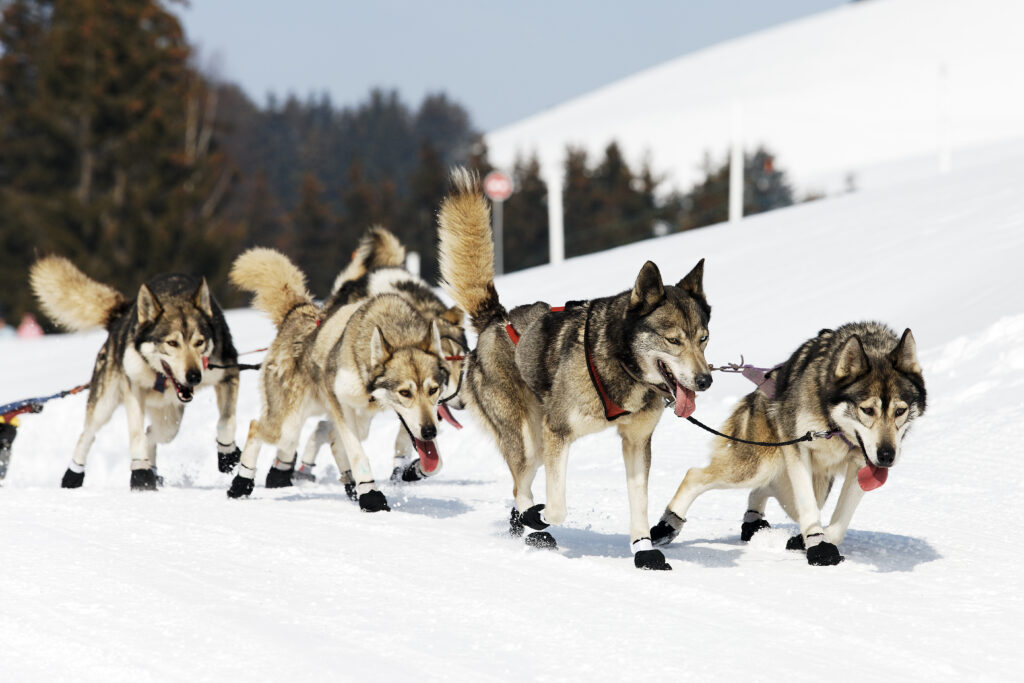The Dogs that are Behind the Sledding Magic
In most people, sledding is inevitably associated with snowy trails, open spaces, and, thus, the thought of speed. However, bringing up the rear are the true heroes in sledding – the dogs. These are not only strong and fast animals. They are intelligent, loyal and enjoy their work.
Which Dog Breeds are involved in Dogsledding?
Alaskan Huskies
The last is not a breed, but a cross produced with the sole aim of performance. These dogs are energetic, lean and fast.
Siberian Huskies
This breed is known to have a striking eyes and to have a wolf like look which makes them enduring and suitable to work in chilly conditions.
Alaskan Malamutes
heavier, more muscular then huskies Alaskan Malamutes were bred to go long distances pulling heavy loads.
Samoyeds
Fluffy and jovial, Samoyeds used to work as reindeer herders and sled dogs in the nomadic tribes of Siberia.
Training of Sled Dogs What strategies are used in training sled dogs?
It begins with training at an early age. The sounds, equipments and routines of sledding life are presented to the puppies before they get too old. Short runs in the small teams are introduced at first, after learning to wear harness.
In growing up, they are taught voice commands that;
- “Hike!” (go)
- “Gee!” (right)
- “Haw!” (left)
- “Whoa!” (stop)
The trainers seek natural leaders: dogs that are very self-assured, focused, and lead the direction. These are turned into lead dogs. Other people tend to be better at staying in rhythm or pulling heavy- and they are equally as essential.
Sled dogs are trained year round. In summer they are engaged in hikes or on wheel-carts. It is a physical training but trust as well. It is actually the relationship between musher (the driver) and the team that makes the whole thing run.
Short Histroy of Sledding
Dog sledding is an old practice that dates back to thousands of years. Included among indigenous people in the Arctic regions of Alaska, Canada, and Siberia were sled dogs, which played the role of carrying food, supplies, and even people over icy land. It was not sport, it was survival.
The practice got more publicity when the gold rush in the 1800s came up as goods and explorers were transported deep in the Wild lands by sled dogs. Dog sledding even saved lives in the early 20 th century (the most well-known instance of which was the race to deliver life-saving medicine to Nome, Alaska in 1925 during an outbreak of diphtheria).
It is still used in the remote locations in today world, although the activity is more popularly recognized as a winter activity- a combination of the past, nature, and the simple out and out thrill.
Whether you’re preparing a last-minute essay or planning ahead, these platforms with apa paper writer Essaypro deliver consistent, high-quality writing support.

Why The Dogs Like It
There has been a usual concern of whether sled dogs compel them to run. The answer? Observe them before the beginning of a ride. They bark, they jump, they spin -they can not wait. Specially bred and trained sled dogs prefer to work as a team, which makes them the happiest when running in a pack. They survive on motion, cold air and routine.
What will happen when the ride is ended? Majority turn into balls, sleep in the snow or huddle with their mushers. Work is not only work but life.
Students benefit from writing support with essays for sale at an affordable price that delivers consistent quality while reducing the stress of multiple deadlines.
